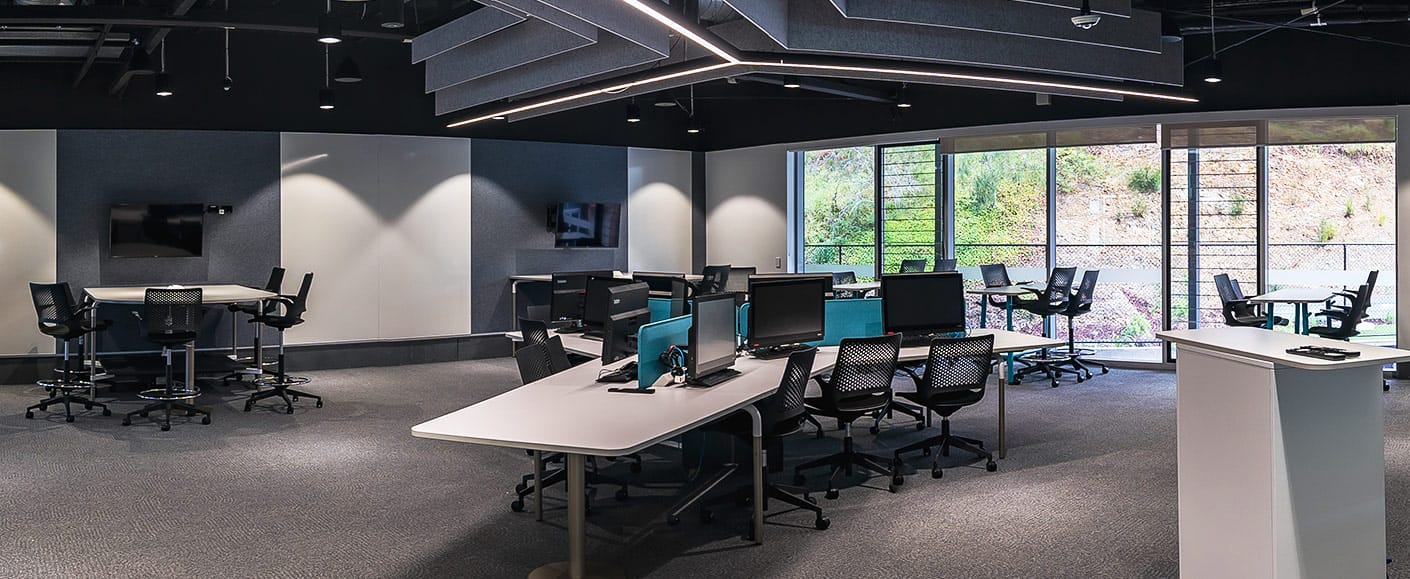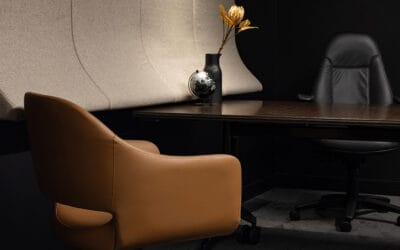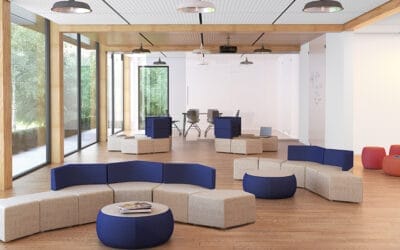Classroom interior design can have a huge effect on a student’s learning experience. Small touches like classroom lighting, the colour of a room, air quality, layout, and quality seating can all impact a student’s ability to thrive in a school, college, or university.
Whether they’re eight or 18 years old, students need a space that is comfortable and adaptable to their changing needs. Increasingly, modern teachers look for classrooms that can promote a collaborative environment or active learning as they conduct their lessons.
Most students spend more than six hours a day sitting at their desks, and dull, uncomfortable spaces don’t tend to produce the most inspired individuals.
To maximise engagement in the classroom, a learning environment should be designed with students in mind. It should be ergonomic and adaptable. Modern classroom furniture should be at the heart of classroom interior design.
Collaborative seating is crucial in 21st century teaching. Unconventional furniture pieces, like Buro’s Konfurb Eightby4, can unleash imaginations, bring people closer together, and turn a staid learning environment into an active learning classroom.
Lots of design factors can positively influence a learning environment. Here are five that every interior designer, school principal, school seating planner, or procurement manager should know about.
Flexible design
In modern teaching, flexibility is key. Schools often strive for a flexible classroom design, in the belief that movement and re-arrangement will encourage collaboration and connectivity between students. Increasingly, rigid column setups like the days of old, and the classic high school chair, are being discarded in favour of something more forward-thinking.
Some of the most common layouts featured in today’s classrooms include the quad/cluster design, the horseshoe layout, and distinct learning centres.
A mixed floor plan is another good option for classes engaging in different activities at the same time; this works especially well for young children. It can also be useful for universities, where different classes are held in the same room.
There’s a science behind the benefits of group seating and the active learning classroom. According to esteemed professor David Thornberg there are three different functions in a learning environment; the cave, the campfire, and the watering hole.
- The cave, according to Thornberg, is a reflective space, free from stimulation, where a student can withdraw and get on with their work. Able to block out external distractions, students can do some of their best work in a cave environment, Thornberg says.
- A campfire is a space where expertise is delivered to learners. Students gather around to hear what a tutor or teacher has to say, and the space is set up for them to impart their knowledge.
- The watering hole is a space for several people to come together and learn. It is configured for people to bounce ideas off one another in an improvised, free-form manner. Think group exercises, or brainstorming sessions.
A flexible classroom should be a cave, campfire, and watering hole all at once. Blended learning classroom design should be at the front of your mind, and modern classroom furniture at its centre.
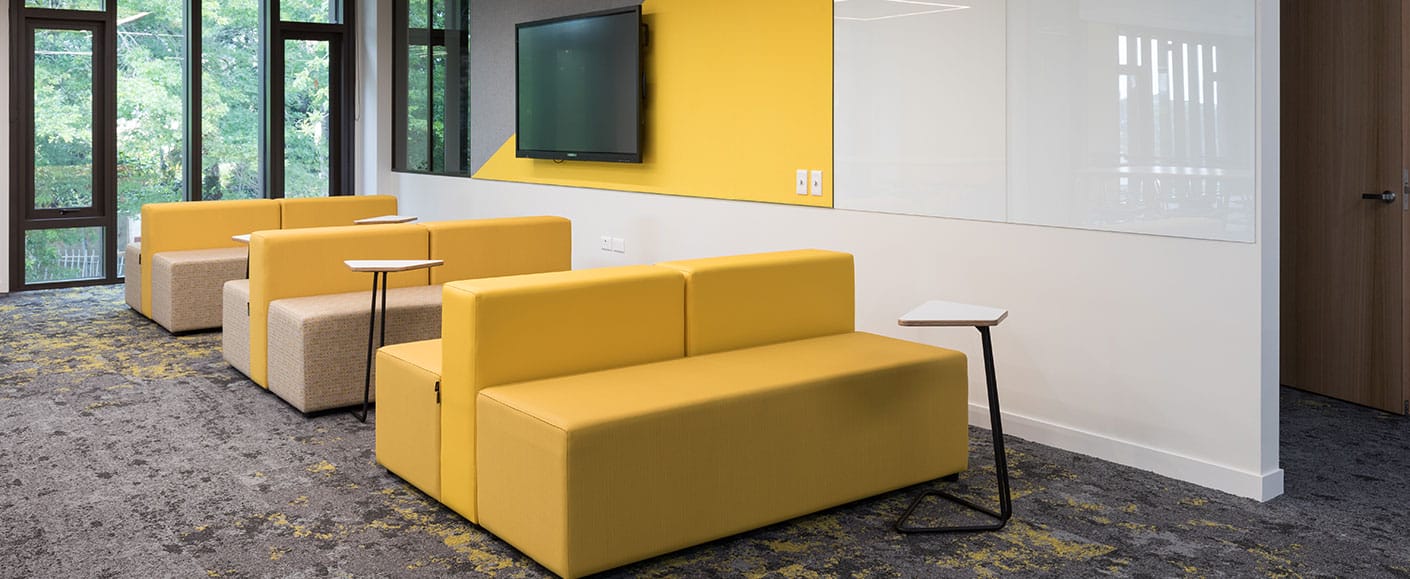
Konfurb Block featured in St Kentigern Boys’ School
Tiered seating for schools
Chairs of different heights can be used in a single space to create a tiered or theatre-type seating arrangement. This kind of setup can be useful when there are multiple focal points to look at, or multiple screens on show.
Since the pandemic, classrooms are continuing to evolve. There are now a number of different focal points in a classroom alongside the traditional whiteboard, and many teaching environments have remote students joining via display screens.
Long gone are the days of having seats lined up in rigid rows and columns. A new approach to teaching and learning requires a fresh approach to seating.
As student needs evolve, so must the classroom. A variation of chair heights with swivel mechanisms and castors can help, giving teachers the flexibility to reconfigure their classes whenever they need to.
The psychology of interior design
The great professor Albert Einstein, one of the leading intellectuals of our time, once declared that he didn’t teach his students. “I only attempt to provide the conditions in which they can learn,” the genius said.
To paraphrase Einstein, your classroom needs to deliver the perfect learning environment. Put yourself in the mind of the student; you want to be comfortable, undistracted and at ease.
Experts around the world have long sought to unravel the mystery of the perfect working environment. A California architecture firm once conducted a study of 21,000 students, finding that those working with natural light scored as much as 25% higher on tests than other children.
In short, several psychological factors can make or break a classroom space. So take this into consideration when designing a learning environment. All too often, interior designers consult with admin teams instead of teachers and students. Don’t lose sight of what the students want and need.
A variation of chair heights with swivel mechanisms and castors can help, giving teachers the flexibility to reconfigure their classes whenever they need to.
Konfurb Harmony chair featured at St Andrews Lutheran College.
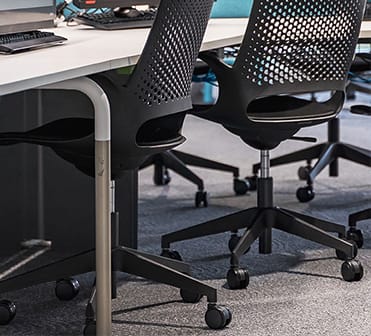
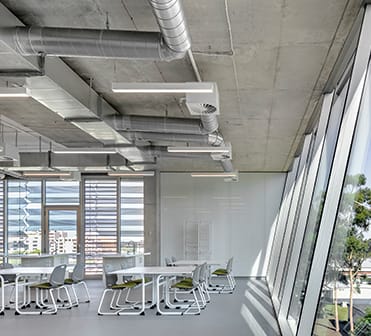
Konfurb Quest Cantilever chair (AU only) featured at MLC School, Sydney.
Classroom ergonomics
It’s crucial to pick ergonomic chairs and desks for any education facility. Children and young adults are still developing so they need furniture that won’t cause permanent damage to their bodies. The plastic school chair of old just won’t cut it.
Students may need furniture that’s comfortable to sit on for extended periods. If so, chairs should be easily adjustable, provide lumbar support and be appropriate to student needs. Depending on the style of learning, swivel and wheels could be useful to rearrange the room quickly.
An ergonomic chair for younger children may look different to a chair for older students. Keep in mind the classroom layout, the learning style, and the duration of the activity students are completing.
Once the learning goals of a classroom are set and learning styles are identified, a classroom can be designed ergonomically. Throughout the year, a classroom’s environment can affect student progress. Ensure your learning environment is planned with care and attention.
Experiment with different classroom layouts, seeing which suits your students best. Identify what kinds of learners your students are (use the VARK model) and then add engaging elements to the room for each type. Create an engaging, inviting, and comfortable space for your students.
Explore our range of ergonomic computer chairs.
Decoration
Classroom decoration is often overlooked because teachers fill the walls with students’ work. But starting off the school year with blank walls can leave visual learners feeling bored and restless.
Having colours on the walls, along with educational posters, charts, and art supplies will make them feel more at home. And isn’t that what a welcoming classroom is all about?
Kinesthetic learners will love to have props and toys around the classroom that will engage their problem-solving skills.
Another ‘decoration’ could be the use of music in the classroom. It can create a whole new world for students and be used to stimulate their imaginations. Visual aids like projectors and smart whiteboards can also be helpful.
Find inspiration
Now you’ve heard the latest design tips to create the perfect learning environment, take a look at some of Buro’s case studies for inspiration. Whether you’re designing an active learning classroom, looking for school library furniture, or computer chairs for schools, we have the perfect fit.From schools to colleges and universities, our ergonomic Buro Seating and Konfurb ranges are used across a range of modern classroom settings and learning environments.
Need seating for your learning space?
Talk to our knowledgeable sales team about how our seating can best enhance learning today.

